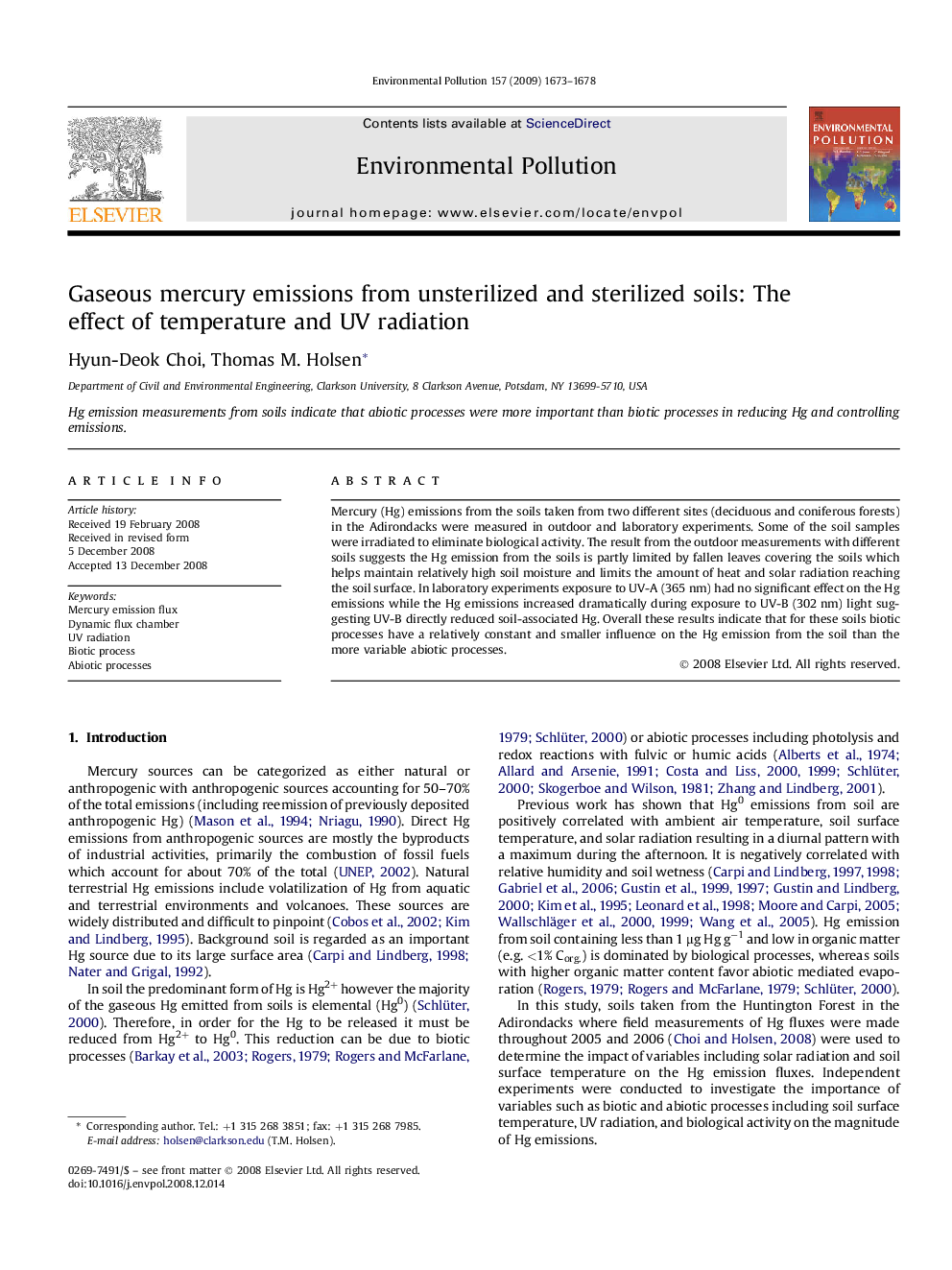| Article ID | Journal | Published Year | Pages | File Type |
|---|---|---|---|---|
| 4425714 | Environmental Pollution | 2009 | 6 Pages |
Mercury (Hg) emissions from the soils taken from two different sites (deciduous and coniferous forests) in the Adirondacks were measured in outdoor and laboratory experiments. Some of the soil samples were irradiated to eliminate biological activity. The result from the outdoor measurements with different soils suggests the Hg emission from the soils is partly limited by fallen leaves covering the soils which helps maintain relatively high soil moisture and limits the amount of heat and solar radiation reaching the soil surface. In laboratory experiments exposure to UV-A (365 nm) had no significant effect on the Hg emissions while the Hg emissions increased dramatically during exposure to UV-B (302 nm) light suggesting UV-B directly reduced soil-associated Hg. Overall these results indicate that for these soils biotic processes have a relatively constant and smaller influence on the Hg emission from the soil than the more variable abiotic processes.
